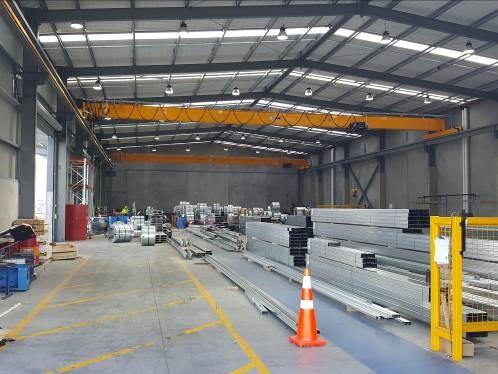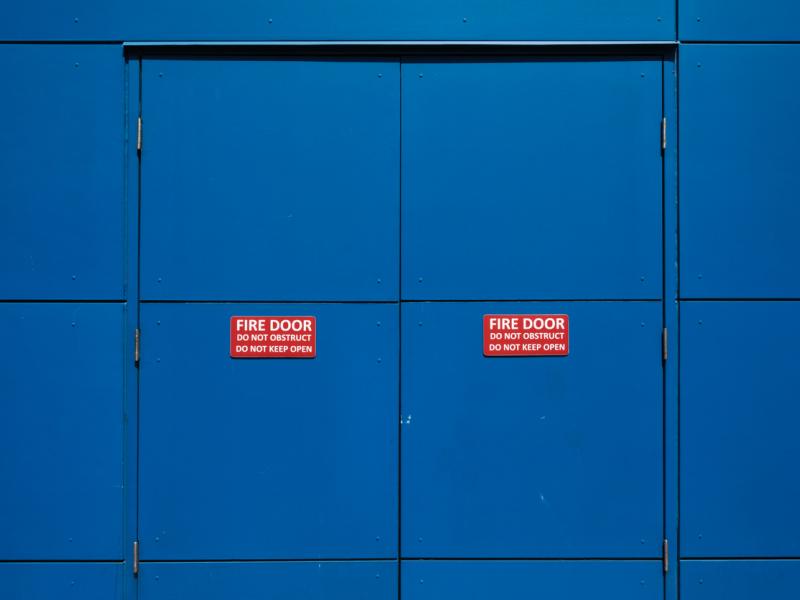Roofing specialist Metalcraft is benefitting from the safety and efficiency of the first ever Konecranes gantry crane with sway control in New Zealand, installed by Southern Cross Engineering.
The Konecranes 5t gantry crane with CXT hoist is used for lifting purlins up to 23.5m in length onto trucks at Metalcraft’s Christchurch facility, which already had Konecranes units installed.
“The sway control feature added to this latest crane makes a massive difference to the overall safety and efficiency of lifting, especially when dealing with such long loads,” says Mr Ben Blower, Contracts Engineer, Southern Cross Engineering, a company that provides full turnkey packages to end-users in New Zealand.
“Konecranes present the best option for customers who need additional features to optimise safety, reliability and efficiency. They provide New Zealand companies a unique offer, in their ability to supply a range of advanced features, such as sway control, which are proven through applications around the globe,” he said.
Konecranes DynAPilot Sway Control is designed to automatically limit load sway by controlling the bridge and trolley acceleration and deceleration rates. This Smart Feature provides precise load positioning and reduces load cycle times.
“Sway control makes the crane significantly easier to operate. Once the operator has dialled up the hook to load distance on the remote, there is no input they can give the crane to make the load sway,” said Mr Blower.
“Before sway control existed, an experienced crane operator had to manually control the sway of a load by using jogging movements at the start and end of each lift, but this leads to excessive wear on the motors, in extreme cases buttons on remotes have been worn out as a result of this!” he said.
“I’ve already had the operators come back to me and comment on just how easy the new crane is to use and how stable the load is. For any of their future lifting solutions, I believe they’ll definitely be looking hard at including sway control in the specification.”
Sway control not only improves the efficiency of the lift, but makes the entire facility a safer workplace. It reduces the risk of the load colliding with valuable machinery or plant, and most importantly avoids collisions with workers.
“Sway control has helped this Metalcraft facility minimise any safety risks from moving loads which can be difficult for even experienced operators to keep under control. We are seeing more and more customers opting for Konecranes range of smart features, as this technology can assist in offering the maximum level of safety in their workplace,” said Mr Blower.
Metalcraft Roofing is New Zealand’s largest and most established privately-owned building product rollformer and installer with an extensive range of Longrun Roofing profiles, Lightweight Metal Tiles and Rainwater System solutions.
KONECRANES SMART FEATURES
Sway control is just one of a complete range of Smart Features that Konecranes provides to tailor their cranes to the individual needs of users. Others include:
Follow Me, enables the crane operator to speed up operation by simply guiding the hook, by hand, into position over the load. The crane and trolley automatically follow along, overhead
Shock load prevention, which allows for smooth load pick-up. The hoist drive monitors the load. If it is picked up abruptly, the hoisting speed is automatically reduced until the load is lifted. This prevents shocks to the load and the crane, reducing wear of the crane’s steel structure and mechanical parts.
Slack rope prevention, which is an important safety and productivity feature when lifting devices such as lifting beams are used. As the load is lowered, the hoist drive detects when the load has landed and stops the movement. The hoist ropes do not slacken so the ropes do not slip out of the hook block and the lifting device does not tip.
When lifting a load simultaneously with two hooks, hoisting synchronization supervises and controls both hooks so that they run at the same speed, even if there is imbalanced loading between the hoists.
When a load is less than the maximum rated load, extended speed range allows faster lifting and lowering speeds. The available hoisting speed range is extended from the rated nominal speed. This Smart Feature reduces load cycle and waiting times.
Target positioning, which allows up to 120 pre-set target positions and eight home positions. The operator selects the load’s target address and presses the “target positioning” button. As long as the button is pressed, the crane drives itself toward the selected target position. The hoist can automatically raise the load to a defined travel height. When the load reaches the target position, the hoist automatically lowers the load to a pre-defined height.
End positioning, which is designed to speed up the final positioning of the load to an X-Y coordinate. It is especially useful in work cycles involving stationary machines or structures where the operator must repetitively position loads in the same places. The operator can define up to 16 end positions. When the load is moved into a positioning window around the target and the "end positioning" button is pressed, the crane moves the load to the centre of the window. Then, the operator takes over manually and lowers the load.
Working limits, which can be thought of as temporary virtual walls at which the crane stops automatically. Working from the controls, the crane operator sets a limit to trolley, bridge or hoist motion, thus creating a virtual wall in a vertical or horizontal direction. Several Working Limits can be defined for a crane according to the task at hand — protecting people on a temporary walkway or a truck to be loaded, for example.
Protected areas, which are no-go areas, which the crane operator cannot override or adjust. Up to 16 rectangular protected areas can be defined, allowing protection of the most valuable production machinery or busy working areas from possible operator error.






